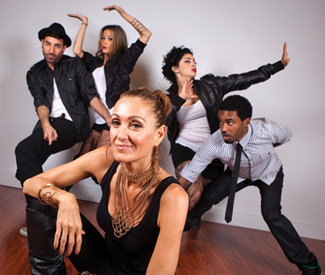GOLDIES “Five, six, seven, eight!” Micaya — teacher, choreographer, and unstoppable producer of the San Francisco Hip Hop DanceFest (the 2011 edition is coming up Nov. 18-20 at the Palace of Fine Arts) — is counting off for her beginners’ class at ODC. Some of these Saturday-morning devotees are skinny; others are not. One has gray hair, most do not; some are dancers, while some … “They are all dancers. We are all dancers,” Micaya (who often calls herself “Mama”) insists after class.
There is something, perhaps not exactly maternal, but definitely loving and encompassing about the way she talks about dance in general and the Hip Hop DanceFest in particular. No matter whether she is, as now, in worn pedal pushers and thick-bottom sneakers or, as emcee at the Palace, in five-inch heels and a tight skirt barely longer than the heels are high — one way or the other, you get a sense that she feels a personal responsibility for the dancers in her life.
As a producer Micaya is a phenomenon. She has single-handedly moved hip-hop from the studio and community hall to a proscenium theater, giving it widespread recognition and enthusiastic audiences. Uniquely, she has done so by honoring the art as a social activity and in its more theatrically evolved expressions. On Micaya’s stage there is room for the recreational dancer and the professional. Significantly, she refers to all of them as “companies,” preferring that term to “crews” or “troupes.” “It’s a matter of respect,” she insists.
Yet the Hip Hop DanceFest, now in its 13th year, started on a hunch. In the late 1980s, Micaya had just arrived from the South, a dirt poor single mom with her small son in tow. “I know what it means to live on food stamps,” she remembers. But she had two kinds of wealth: love for dance (ballet, Latin, modern, jazz, African, hip-hop) and an embracing attitude towards difference, something to which she credits her upbringing. Teaching hip-hop in San Francisco, she offered yearly recitals at Dance Mission. “They always sold out,” she remembers. So she started a festival, and “that’s when I found out how big and rich Bay Area hip-hop is.”
This year the festival had over 100 applicants, from as far away as Kenya and Uganda. Seventeen of them — local, national and international — made the cut. Yet Micaya is a still frustrated producer: so much good art, so little money. No matter, she’ll soon be back on the Palace of Fine Arts stage, pointing to the dancers and exhorting audiences to “give ’em love!”

